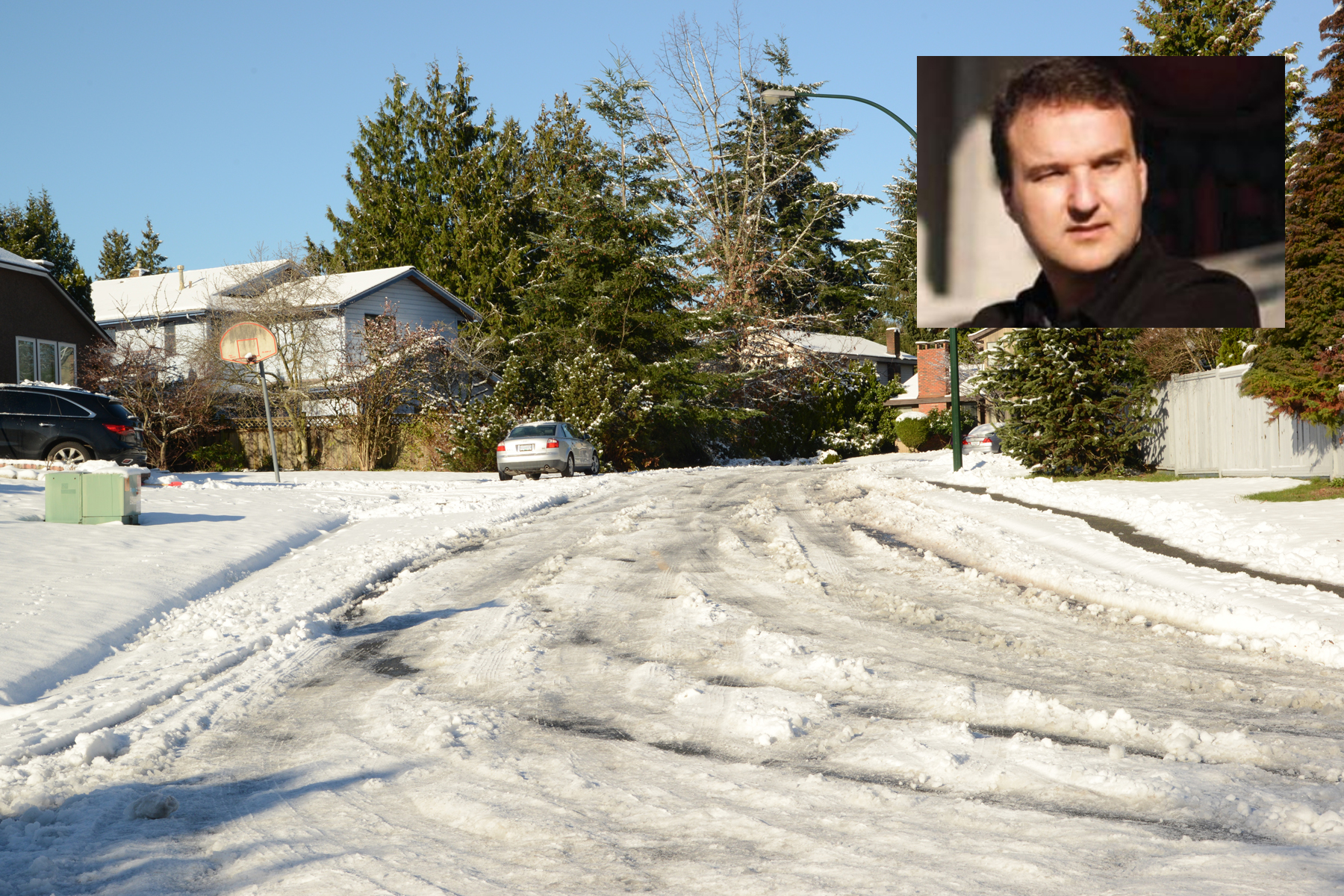
Falls can be life-altering events

When Dr. Fabio Feldman sees snow falling, his thoughts aren’t about the beautiful and nostalgic Christmas card images we are familiar with. As the Manager, Seniors Falls and Injury Prevention with Fraser Health, he thinks about what it will mean to the many people who will suffer injuries by falling on slippery sidewalks and roads.
“Injuries are a huge factor when people have falls at any age,” Feldman says, “but it’s even more serious for the elderly. Kids may fall and break an arm, but they tend to recover easily without major consequences. For an older person who falls and perhaps fractures a hip, it’s much more debilitating. The mortality rate for hip fractures is very high with twenty-five percent actually dying within a year of the fracture.”
Falls are especially devastating among older adults, causing more than 90 percent of hip fractures and 60 percent of head injuries. On average, every 10 minutes a senior is hospitalized because of a fall.
“Many seniors are already dealing with a lot of health issues, now you add a hip fracture,” said Feldman. “The loss of mobility becomes a major factor for admission to long term care facilities. That and the risk of head injuries underscores the need for people to be even more careful, especially outside. Around twenty to twenty-five percent of all falls happen outdoors. Make sure you have appropriate footwear; winter boots with good tread on the soles. And if you have a cane or walker be sure to use them when you go outside.”
Dr. Feldman referenced a research group at the Toronto Rehab centre, that has been measuring the soles of what are claimed to be winter boots and found that some have very little grip.
“My recommendation is test the ones you have, and if it’s very slippery, don’t use them.” Feldman said.
Another aspect for extra attention concerns curbs which may become hard to see as snow piles up as any unexpected change of elevation that may cause a fall. Intersections with sloping wheel chair ramps may also become icy and could easily cause a person to slip and fall. Feldman also suggests people should change their gait to take shorter, almost shuffling steps. This also reduces the risk of slipping.
Four main things to help prevent falls:
- Vision check: The better you see the easier you can avoid obstacles and hazards.
- Review medication: Ask the family doctor or pharmacist if medications may cause balance problems.
• Make the home and environment safer: Wear the right footwear for slippery flooring, identify carpet edges other tripping hazards. - And most important: Exercise and be active: If your fitness level is higher the likelihood of sustaining an injury in a fall is much reduced.
“Seniors tend to leave their homes for activities less often in winter because of the weather,” said Feldman. “Get to a seniors centre or other facility to maintain mobility and fitness through games or mall-walking. Tai-chi is also a very good exercise for people of any age to improve balance and coordination. I highly recommend that.”
When you have to go outside, dress well. Avoid dark clothing, or add a safety vest or some clothing that is reflective. Proper footwear is critical and consider purchasing a pair of slip on ice cleats.

There are many varieties that are easy applied over existing shoes or boots, and we refer readers to Consumers Reports January 2016 for a report on four brands that range from $8 to $37.
For more information and tips check out www.fraserhealth.ca/fallsprevention
Dr. Fabio Feldman got his PhD in biomechanics at Simon Fraser University, mainly focused on the prevention of falls and hip fractures. He currently holds an adjunct professor position at the Department of Biomedical Physiology and Kinesiology at Simon Fraser University and is a faculty member of the Safer Healthcare Now! Falls Prevention Team.











